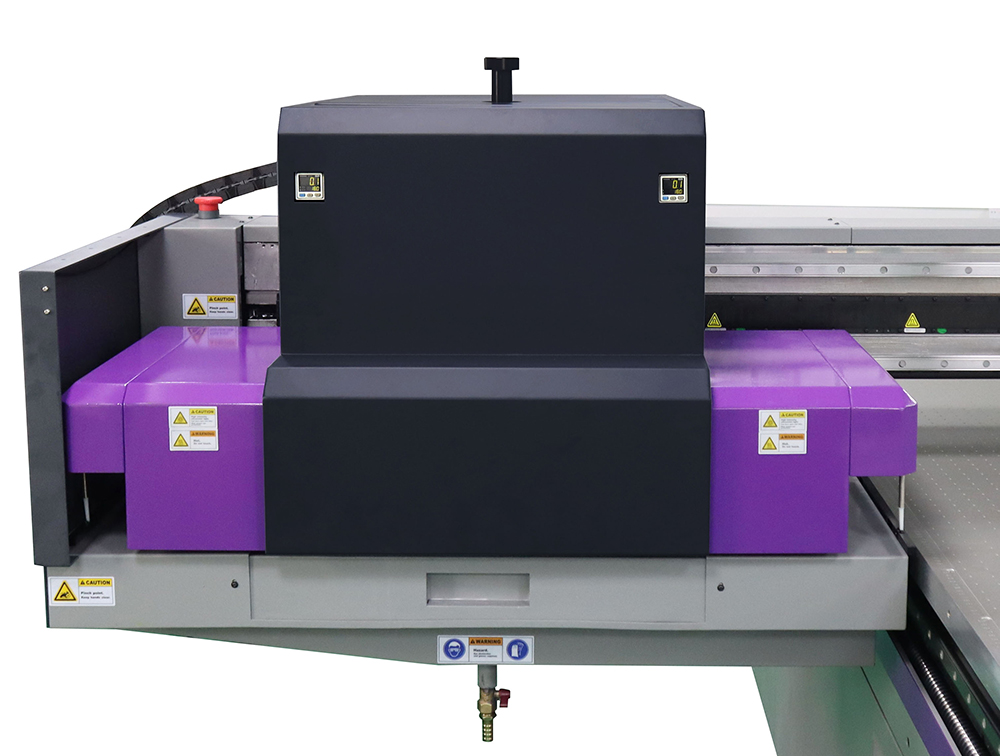Technical Aspects of UV Flatbed Printer’s Printhead Alignment
Understanding the Role of Printheads in UV Printing
Before diving into alignment, it’s important to understand the role printheads play in UV printing. Printheads are the part of the printer that ejects tiny droplets of UV-curable ink onto the substrate. These droplets combine to form the image or text you want to print. Each printhead is equipped with numerous nozzles, and the precision of these nozzles is what allows for high-resolution printing. Misalignment can lead to poor image quality, banding, or even complete print failures.

The Importance of Printhead Alignment
Proper printhead alignment ensures that all nozzles are positioned correctly relative to each other and the substrate. This alignment is crucial for several reasons:
Image Quality: Misaligned printheads can cause color shifts, blurred edges, and overall poor image quality. This can be detrimental, especially for businesses that rely on high-quality prints for marketing materials or product customization.
Efficiency: Correct alignment reduces the need for reprints, saving time and money. It also extends the life of your printheads by reducing unnecessary wear and tear.
Consistency: Whether you’re printing a single job or thousands, consistent alignment ensures that every print meets your quality standards.
Key Technical Aspects of Printhead Alignment
Mechanical Alignment: This involves physically adjusting the position of the printheads within the printer. It’s important to ensure that each printhead is level and parallel to the others. Mechanical alignment can be done using precision tools and adjustments provided by the printer manufacturer.
Electronic Alignment: Many modern UV flatbed printers come with built-in software that allows for electronic alignment. This process involves sending test patterns to the printer and analyzing the output to make fine adjustments to the printhead positions.
Nozzle Checking: Before attempting any alignment, it’s a good practice to perform a nozzle check. This ensures that all nozzles are firing correctly and that there are no clogs or other issues that could affect alignment.
Substrate Height: The height of the substrate from the printheads can also impact alignment. It’s important to ensure that the substrate is at the correct height to avoid issues such as ink smudging or poor adhesion.
Tools and Techniques for Perfect Printhead Alignment
Alignment Tools: Many printer manufacturers provide specialized alignment tools that can be used to make precise adjustments to the printheads. These tools are often included with the printer or can be purchased separately.
Software Utilization: As mentioned earlier, most modern printers come with software that simplifies the alignment process. These programs often include step-by-step instructions and visual aids to help you achieve perfect alignment.
Calibration Sheets: Using calibration sheets can be a helpful technique for achieving alignment. These sheets are printed with specific patterns that allow you to visually assess the alignment of the printheads and make necessary adjustments.
Professional Services: If you’re not comfortable performing the alignment yourself or if your printer is particularly complex, consider hiring a professional service. Many printer manufacturers or third-party providers offer calibration and alignment services.
Troubleshooting Common Printhead Alignment Issues
Even with careful alignment, issues can still arise. Here are some common problems and how to troubleshoot them:
Banding: If you notice banding in your prints, it could be due to misaligned printheads or a problem with the printer’s stepper motors. Try realigning the printheads and checking the stepper motor connections.
Color Shifts: Color shifts can occur if one or more printheads are not aligned correctly. Perform a nozzle check and then realign the printheads to ensure that all colors are printing accurately.
Ink Smudging: If ink is smudging on the substrate, it could be due to the substrate being too close to the printheads or a problem with the UV curing process. Adjust the substrate height and check the UV lamp settings.
Inconsistent Print Quality: If print quality varies from one print to the next, it could be due to environmental factors such as temperature or humidity. Try printing in a controlled environment or consult your printer’s manual for recommended operating conditions.
Conclusion: Maintaining Optimal Print Quality Through Precise Alignment
Proper printhead alignment is essential for achieving high-quality prints with your UV flatbed printer. By understanding the technical aspects of alignment, utilizing the right tools and techniques, and troubleshooting common issues, you can ensure that your printer operates at peak performance. Remember, regular maintenance and alignment checks are key to maintaining optimal print quality and extending the life of your printer. So, take the time to align your printheads correctly and enjoy the benefits of beautiful, consistent prints every time.
